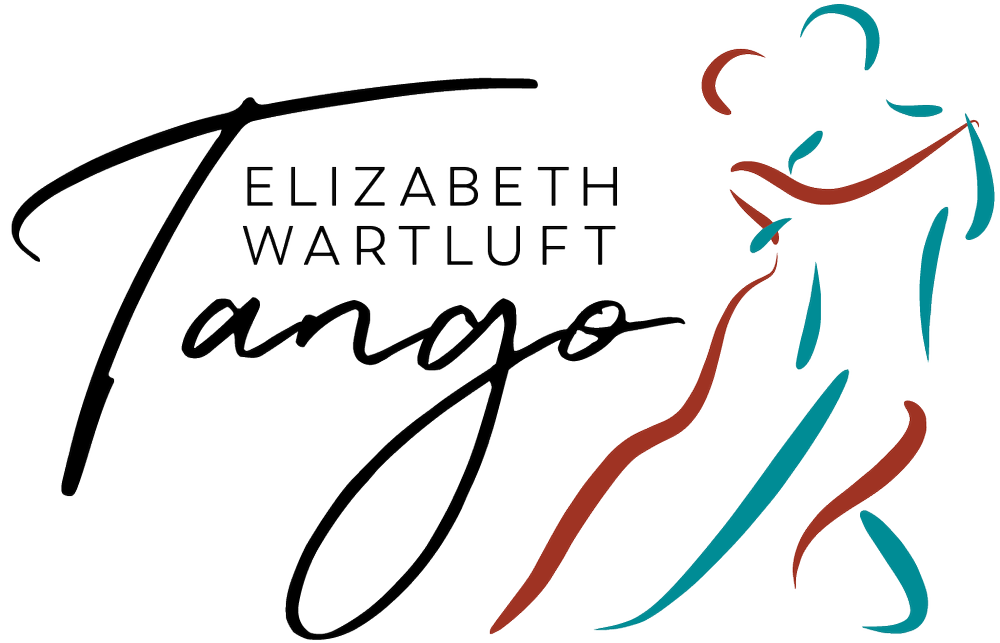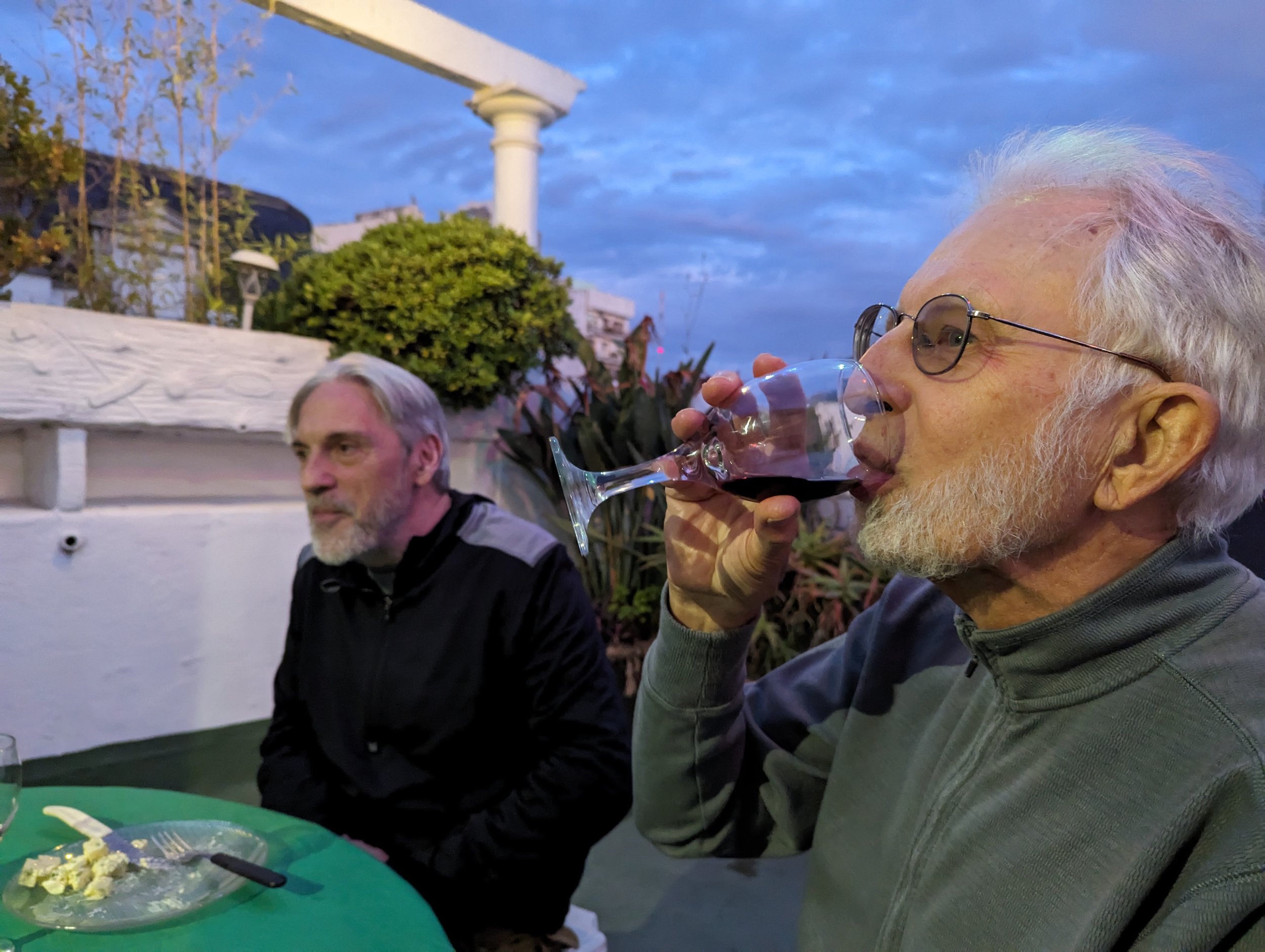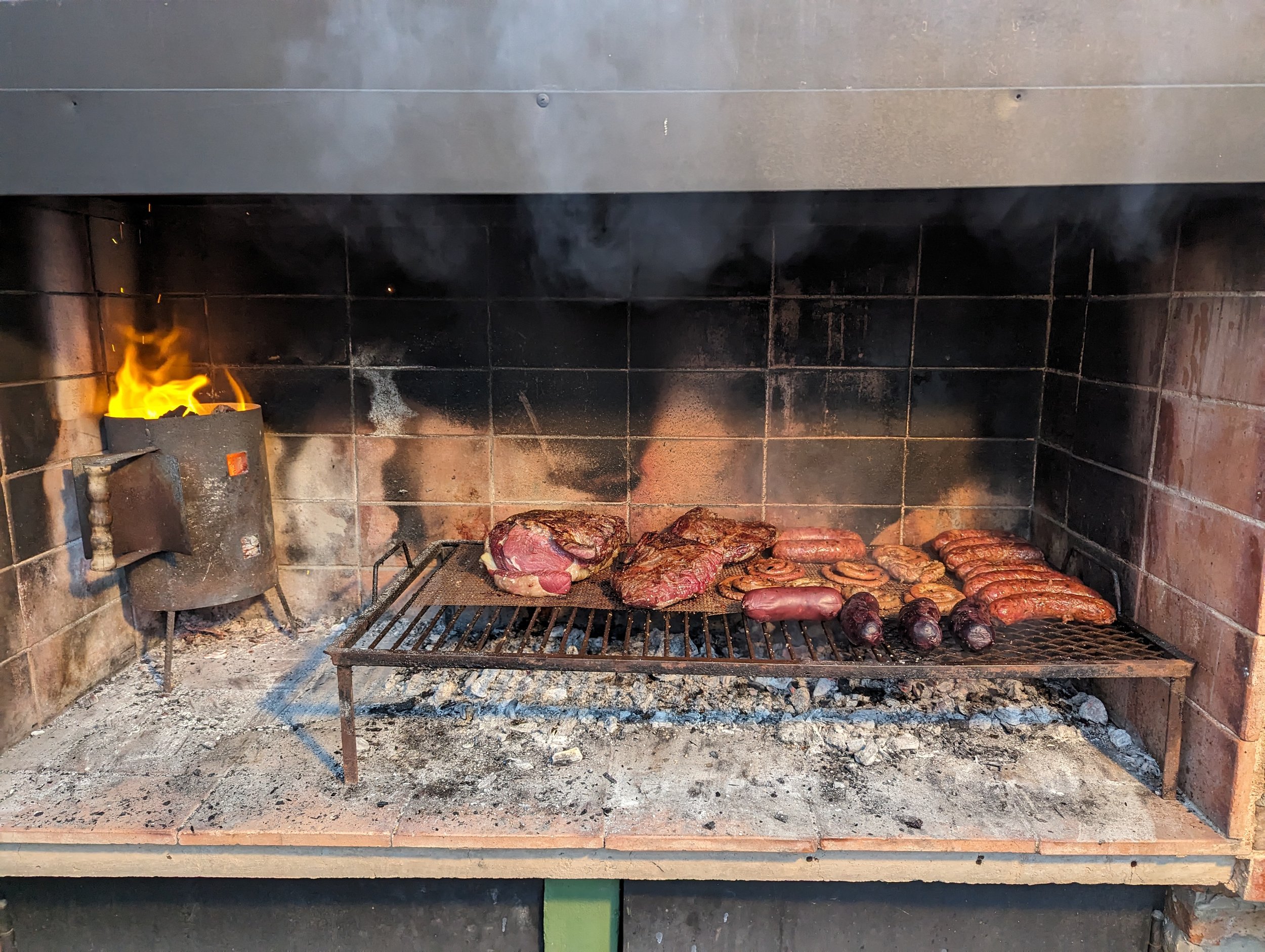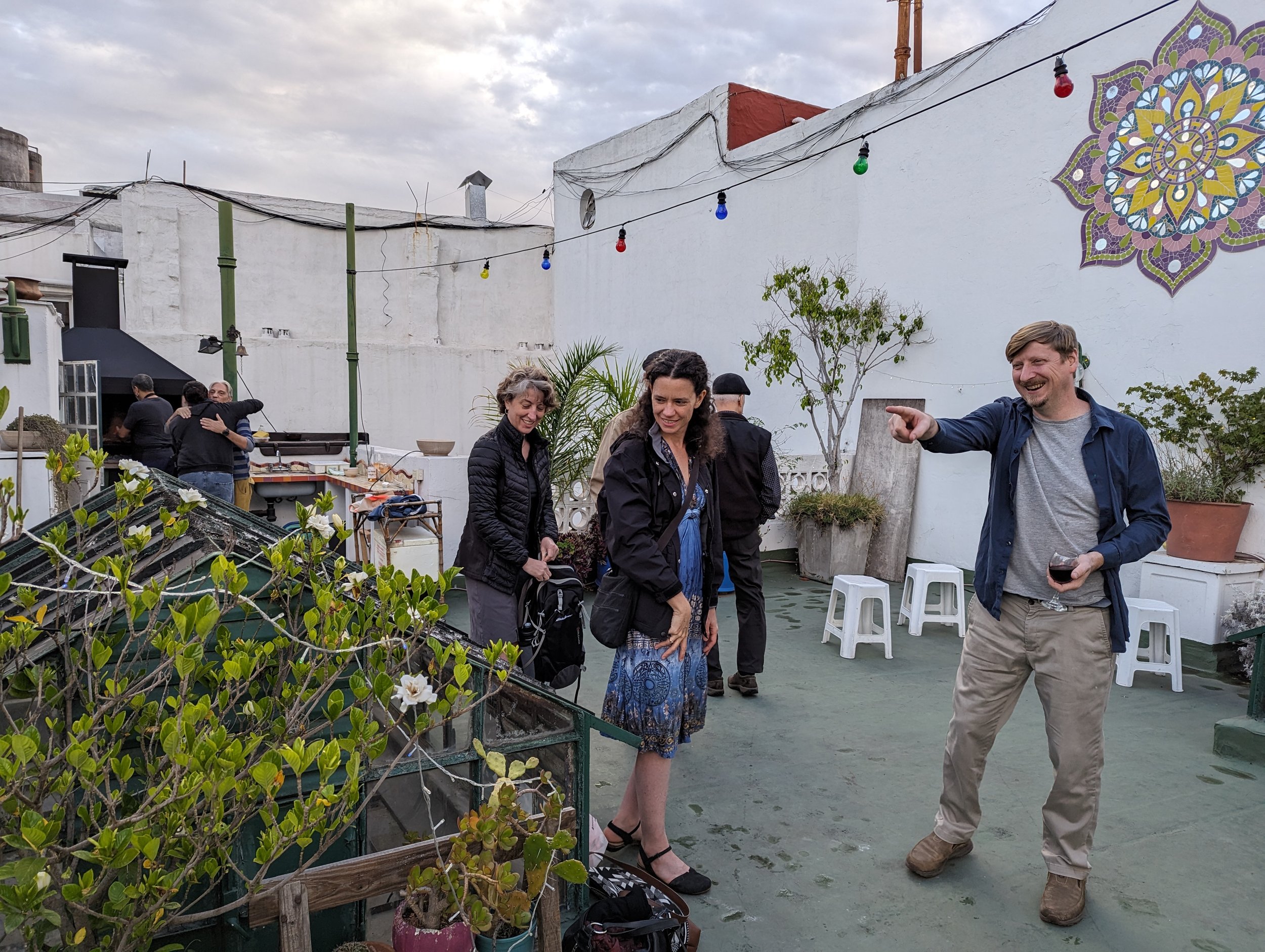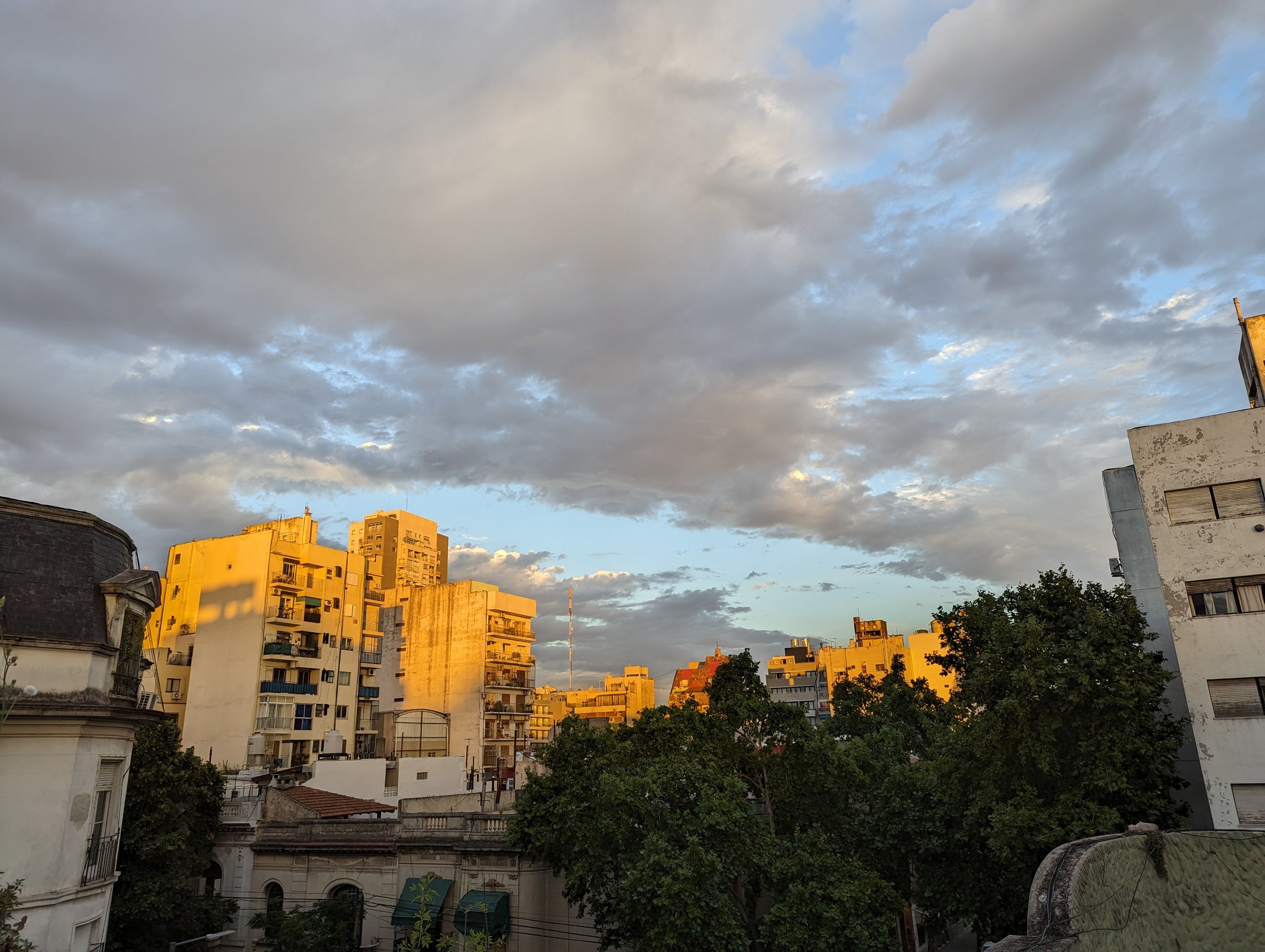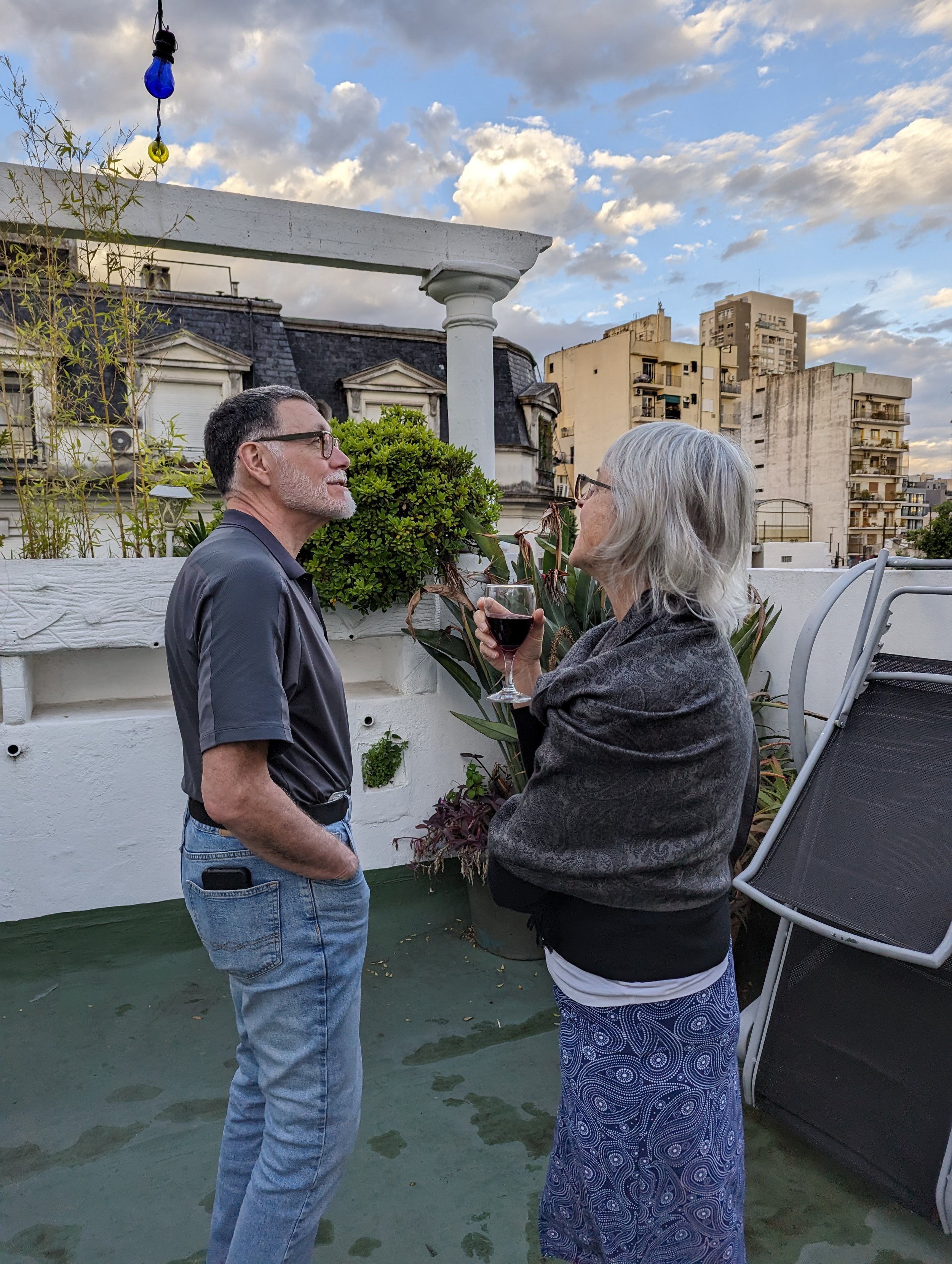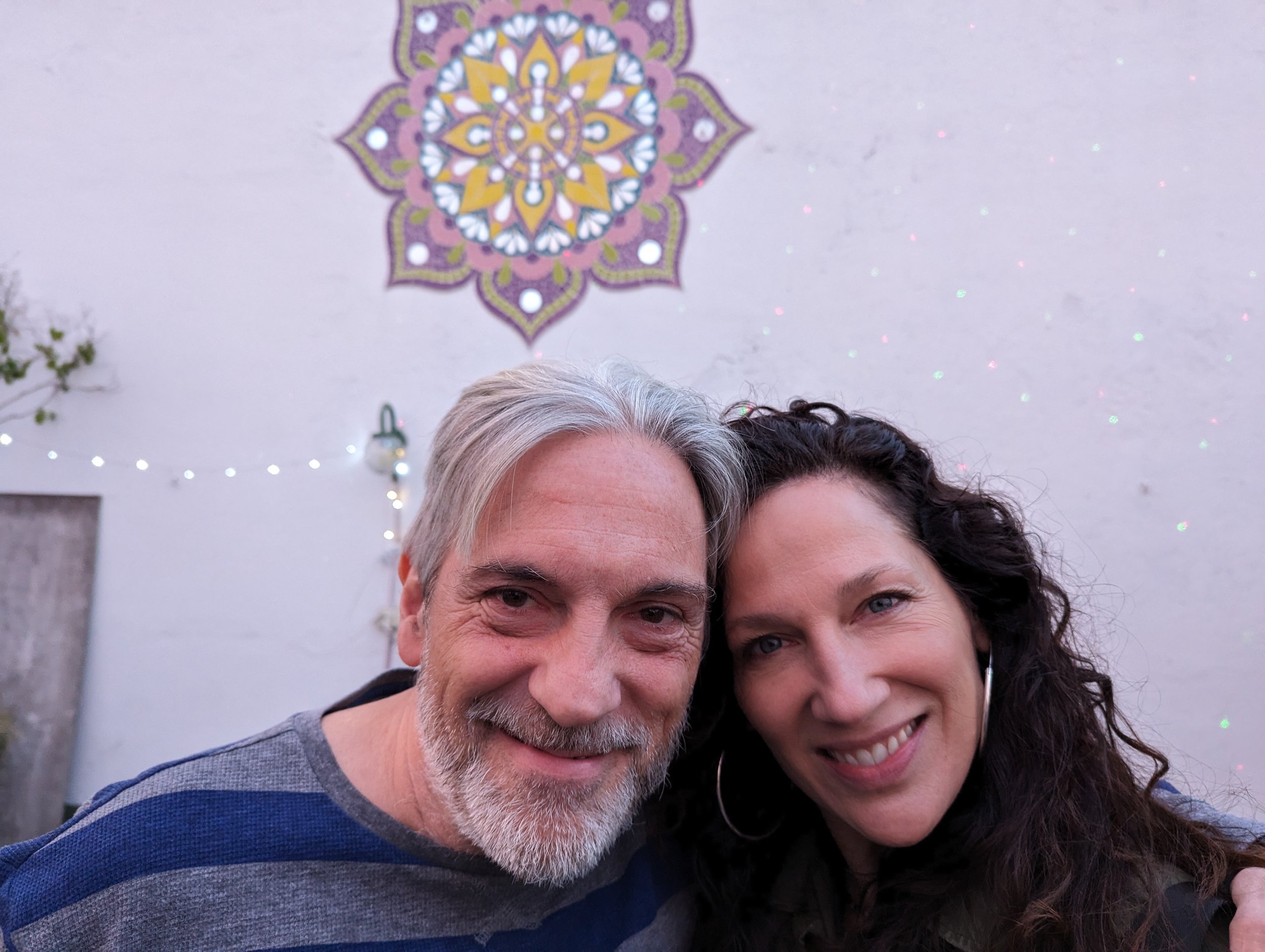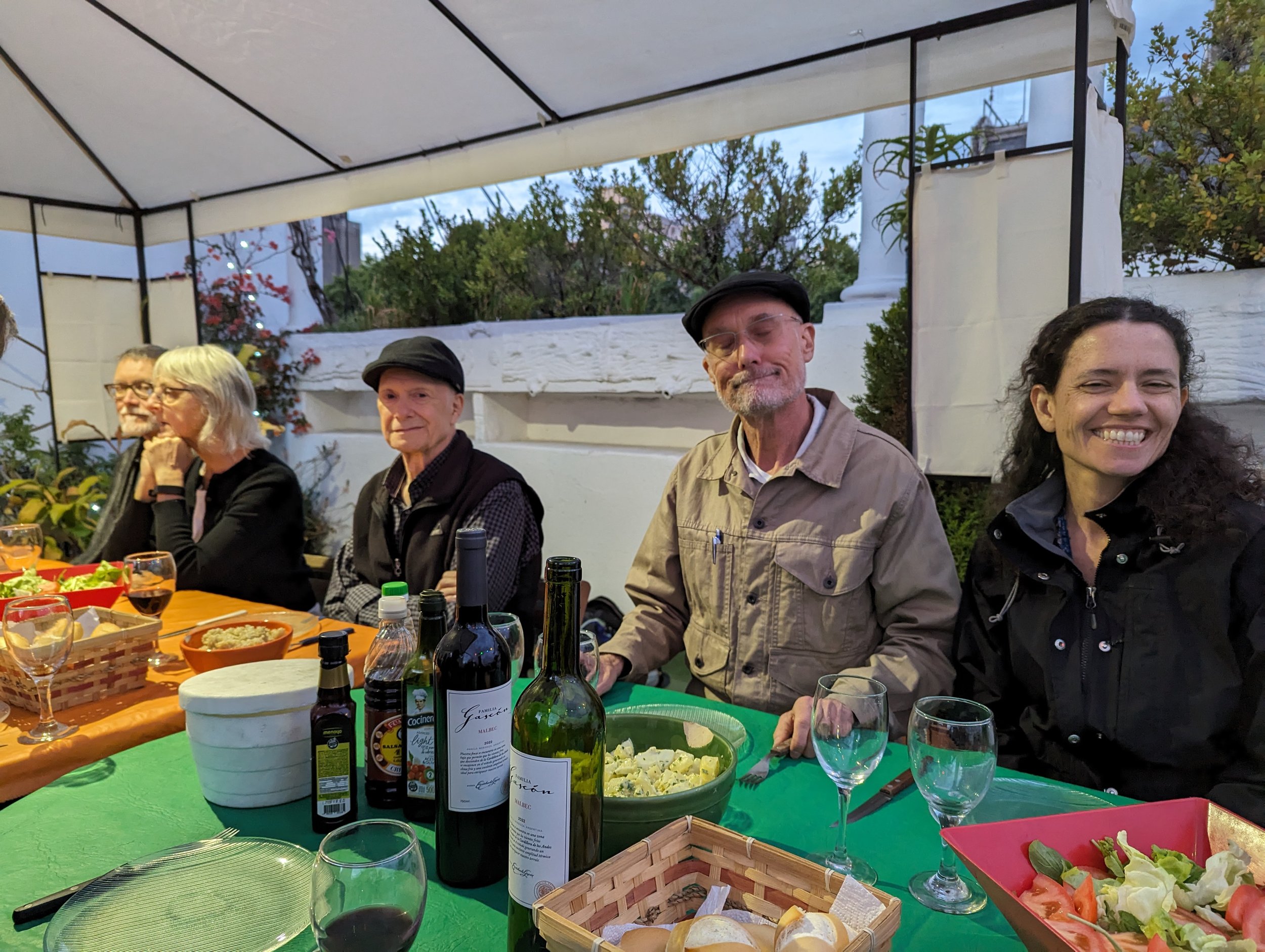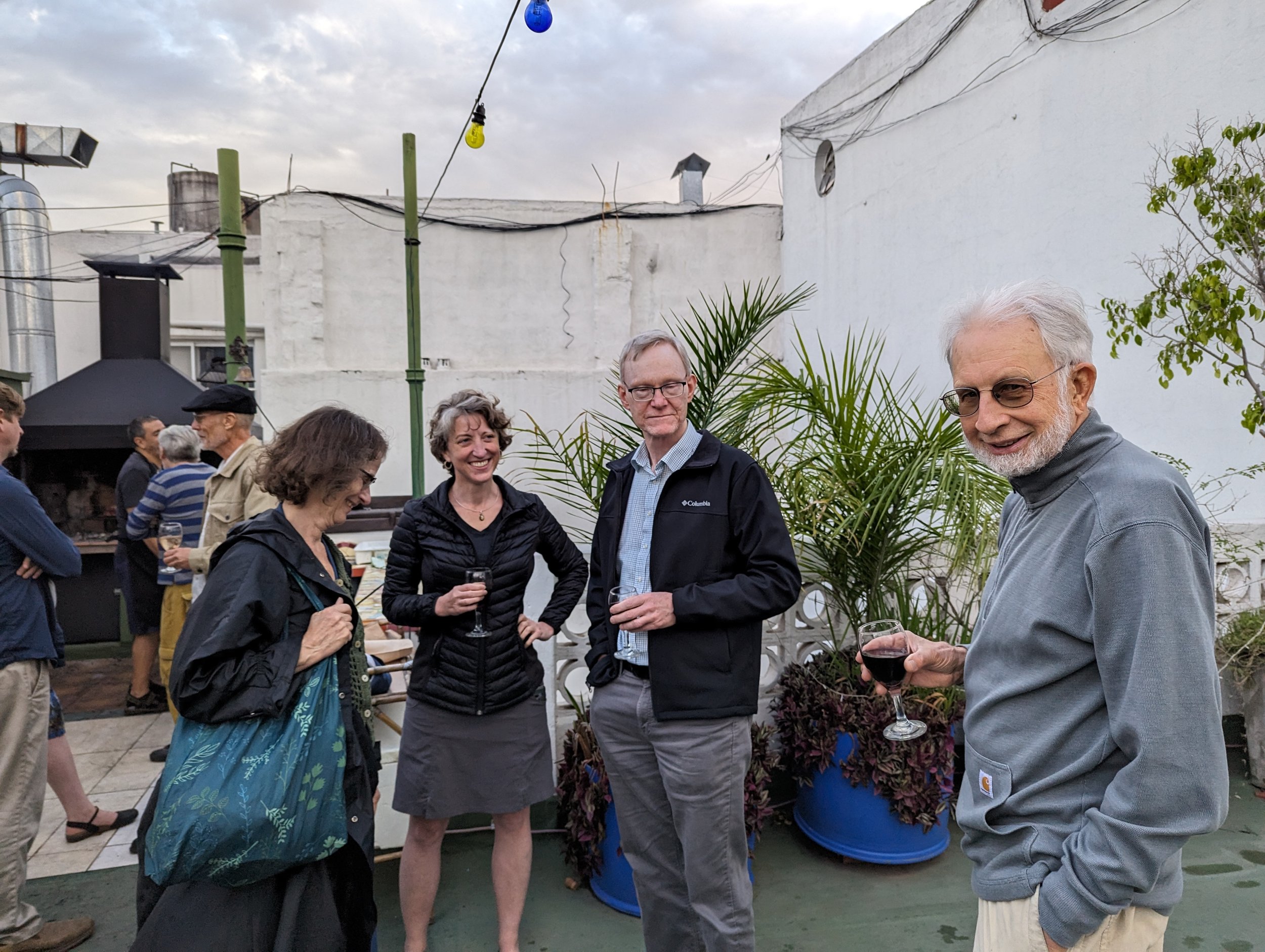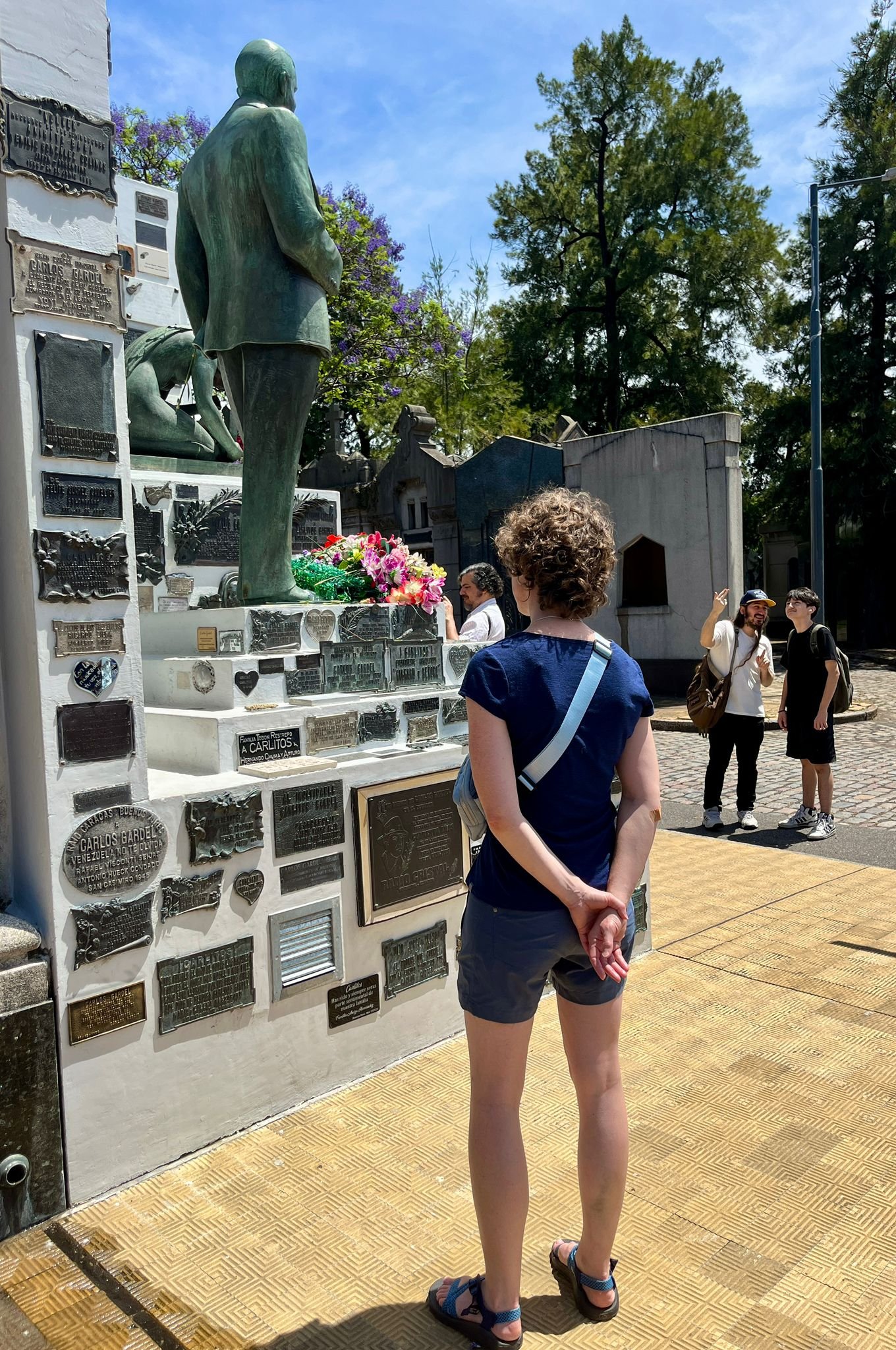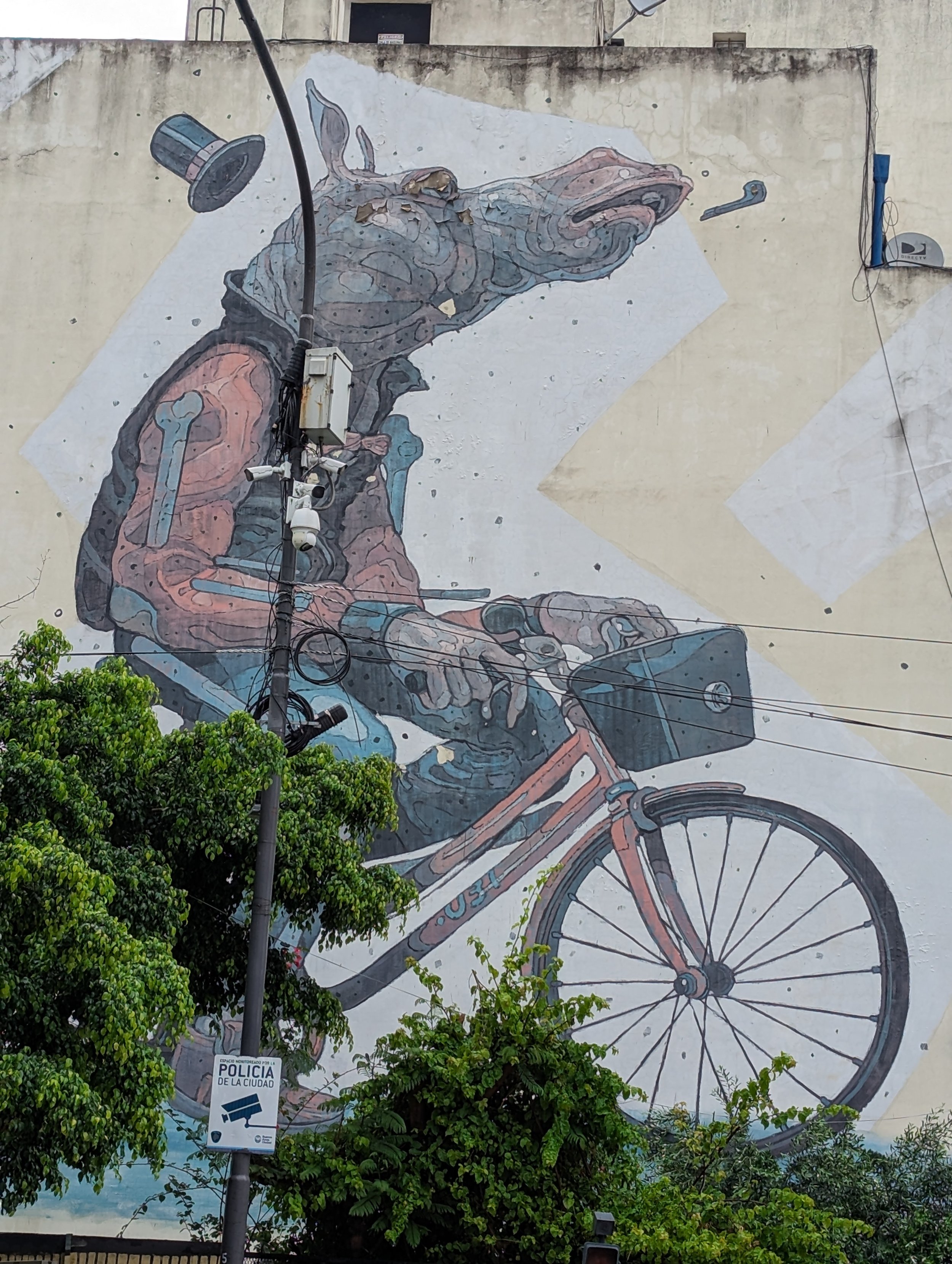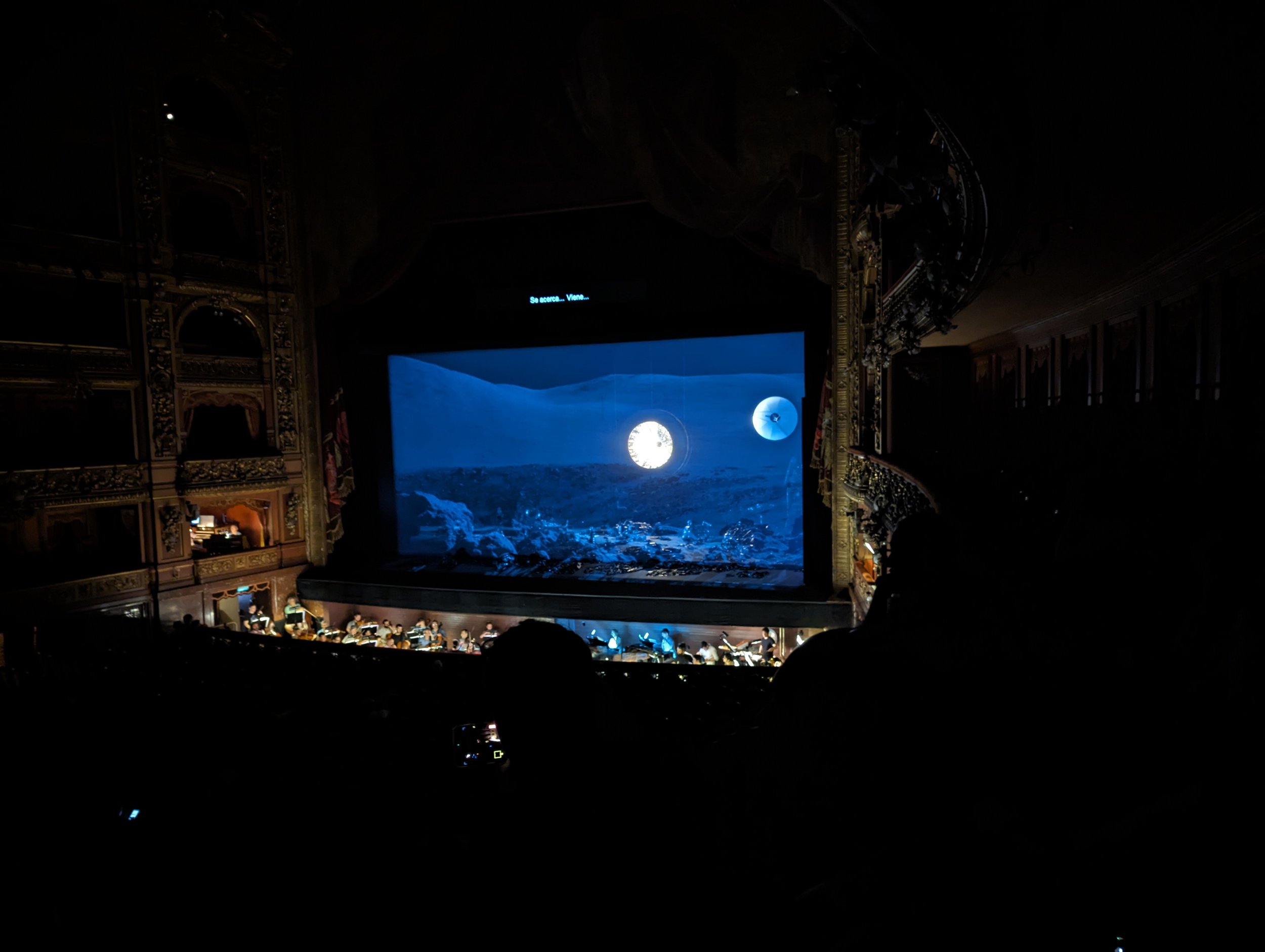The current tango tour group are mostly world travelers, so we have done extraordinarily little in a group of ten. Today was no different.
It rained most of the day: I have never had such a rainy December in Buenos Aires! We split up in the morning. Some visited the street fairs (San Telmo and Recoleta and Palermo). I will add photos here as people send them to me. Others took tango lessons. The valiant late-night (oh, is it after 3 am already? Cat I am looking at you!) were up and about as well.
Milonga review: La Rosa Milonga at El Beso, Riobamba 416
La Rosa is a new organizer. She is young, energetic, organized, and ran the milonga with an iron hand. Every half hour or so, she stopped the DJ and demanded everyone move over to make room for new people, scolding folks for holding onto seats. I have never seen that before!
Denise, Ed, Scott, Sally, Cat, and I went to El Beso. It was crowded with all ages, dancers from a dozen countries, and good music. On the best of days, El Beso is tricky for new leaders, as the room has a column ALMOST in the middle of the dance floor, which creates strange traffic issues. I was proud of the guys for jumping into the fray and holding their own. Everyone is getting better at cabeceo.
Parrilla!
The rain stopped a few hours before the big fiesta, and the weather warmed up enough to eat al fresco outside on the terrace, rather than inside.
Jesus Pietropaulo, a friend of Jose’s, was our chef as we partied on the rooftop of La Maleva. We devoured everything he brought to the table; a few decided the blood sausage was not their thing, but other hungry folk tucked it in between the chinchulines (intestines), chorizo (sausage), bife de lomo (beef tenderloin) and bife de chorizo (sirloin or NY strip steak if I am correct). On top of that, there was bread, potato salad with enough garlic to make my son die of happiness, tossed salad, more wine, and ice cream and champagne punch for dessert.
The food was marvelous, and Jesus quipped, “Look! They are drinking like argentinos!” which I think was a compliment. Twelve hours later, I was not hungry at breakfast, so that is the sign of a feast! For me, this was a highlight of the tour.
You can enjoy the sunset, the meat, and the party atmosphere with us in the pictures below:
